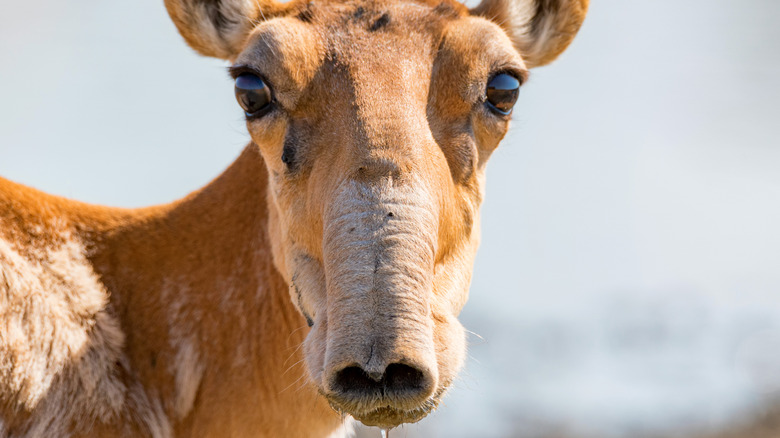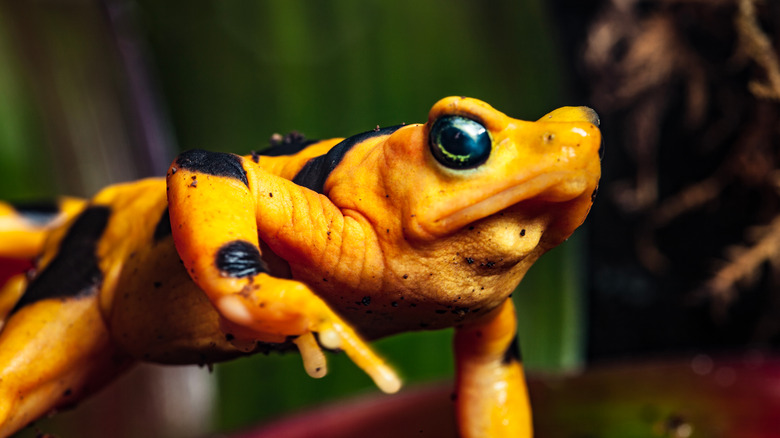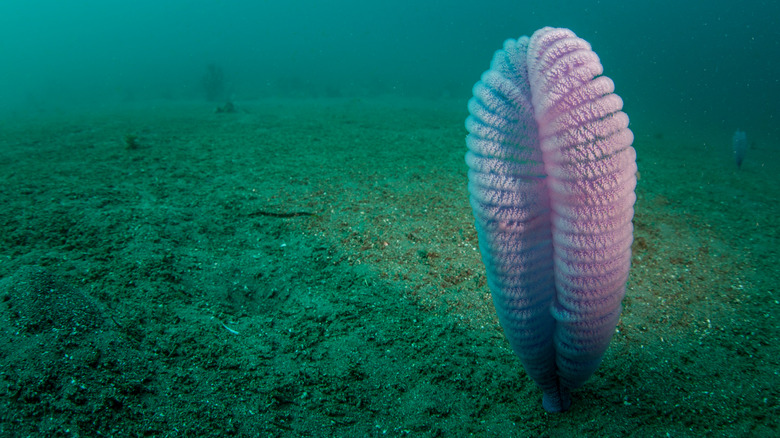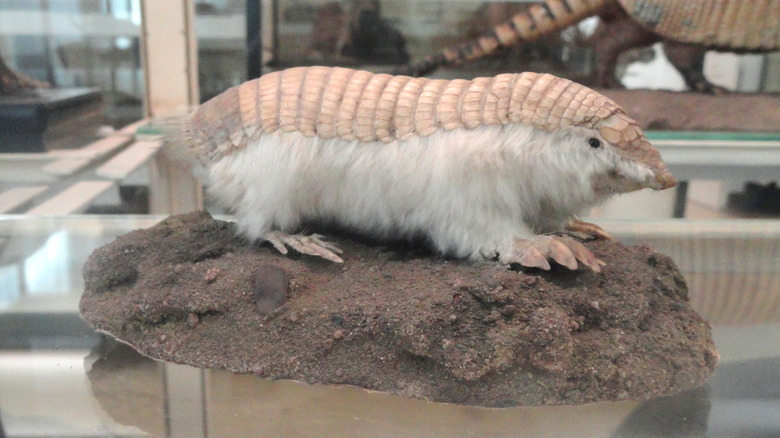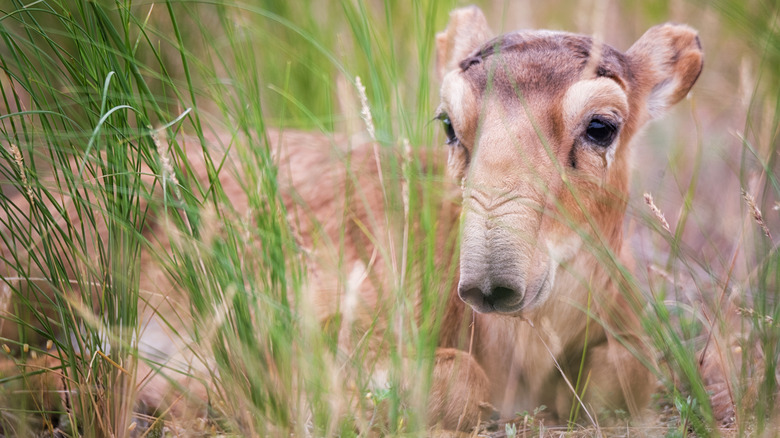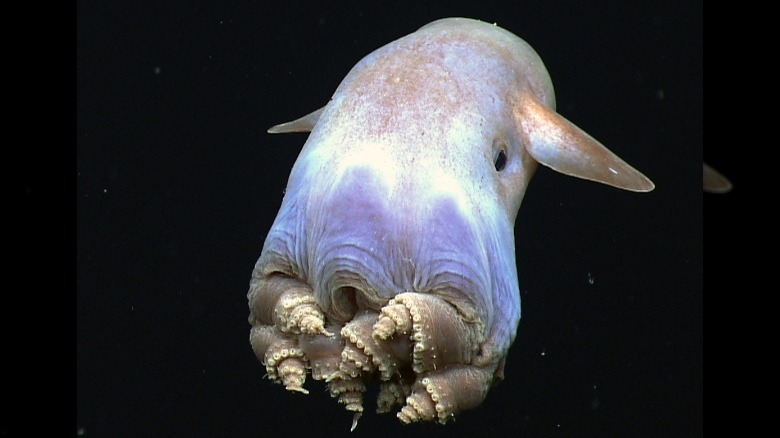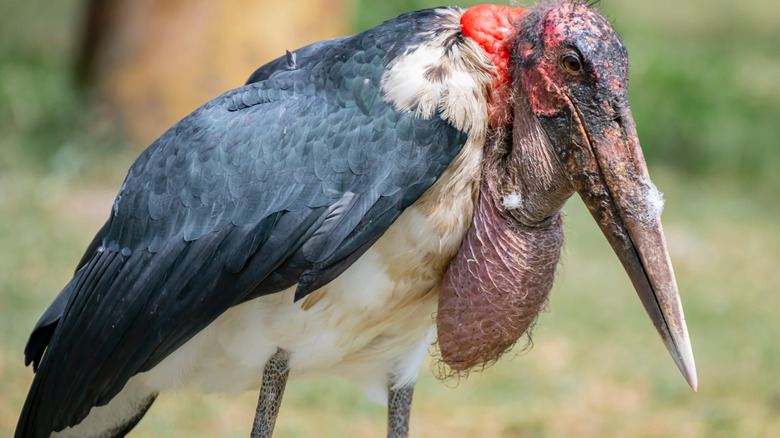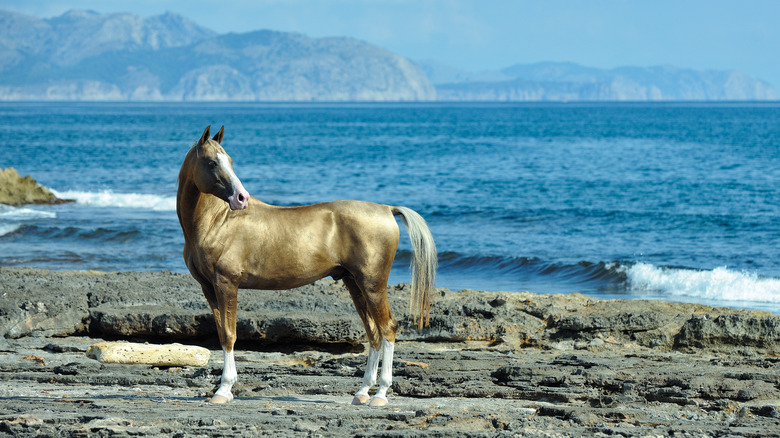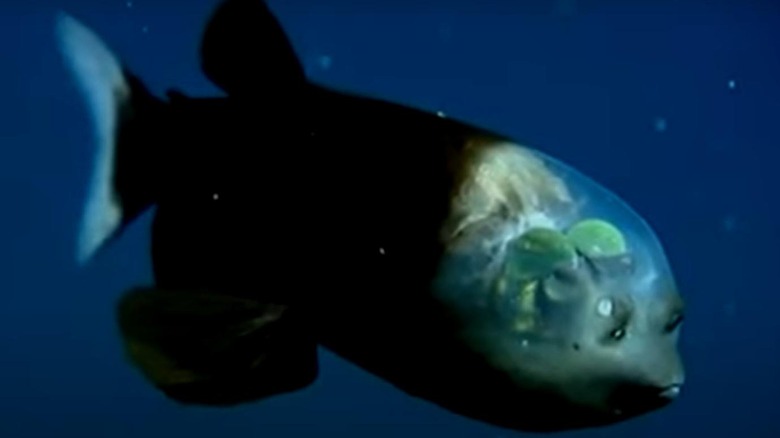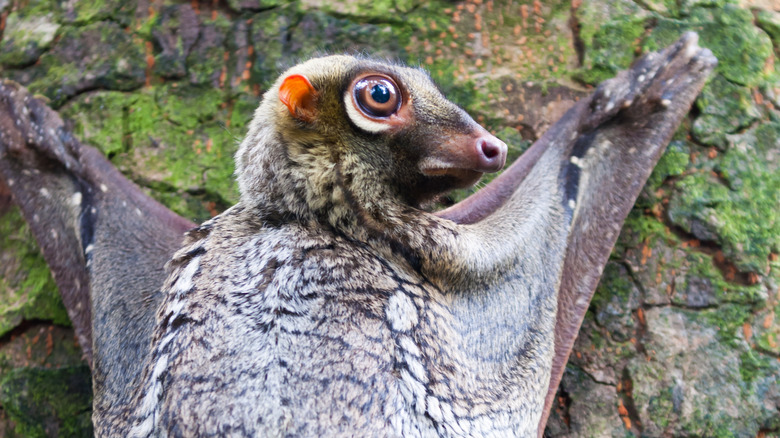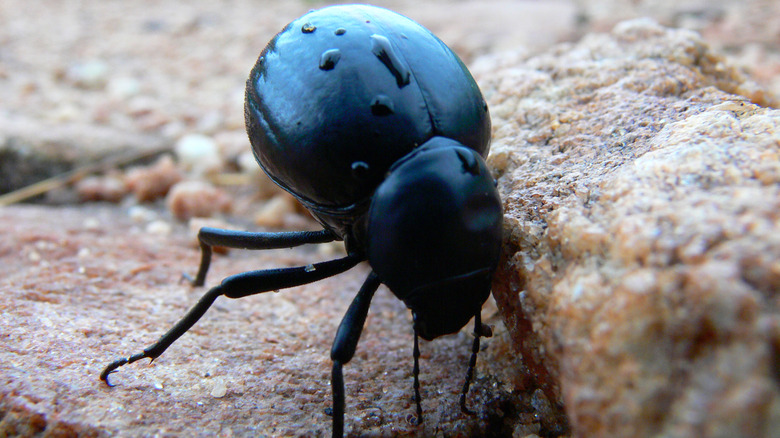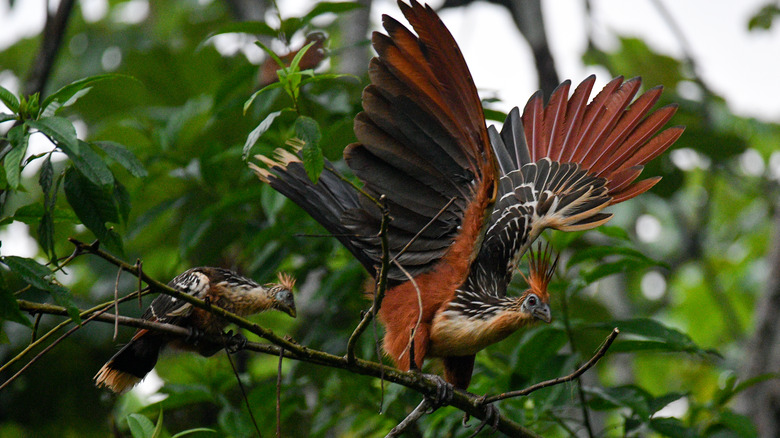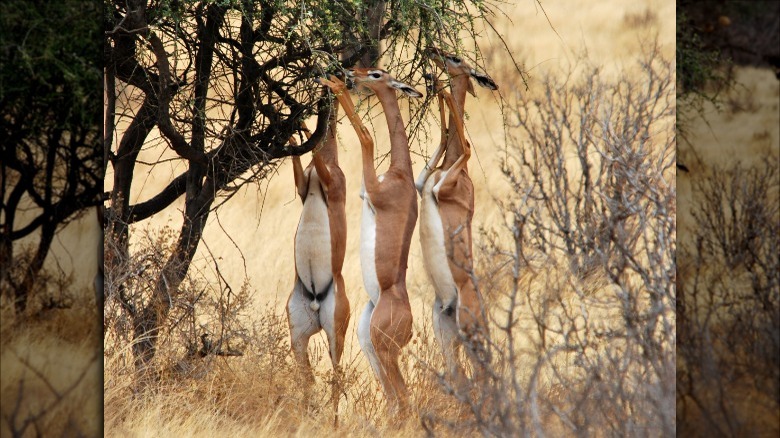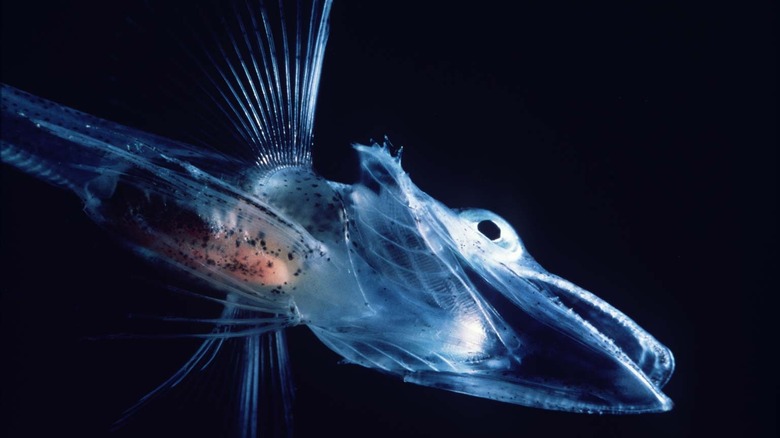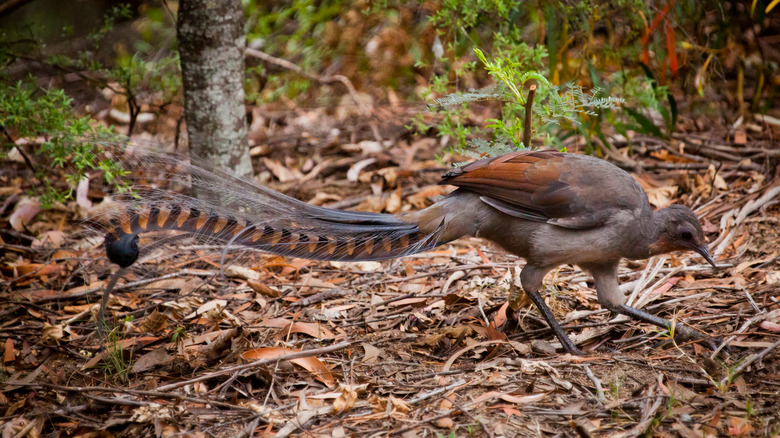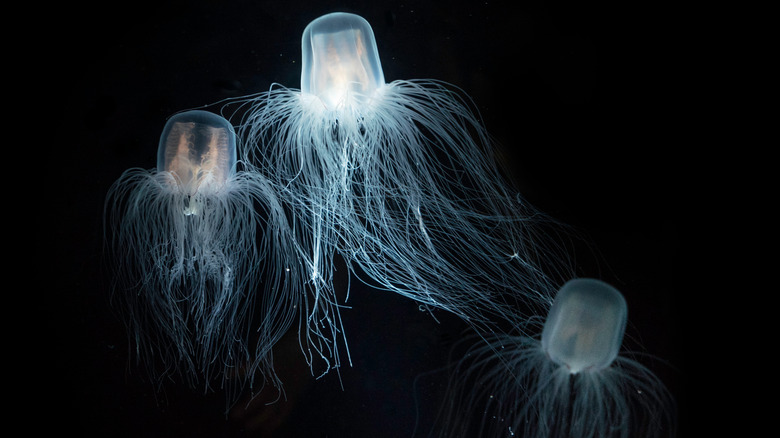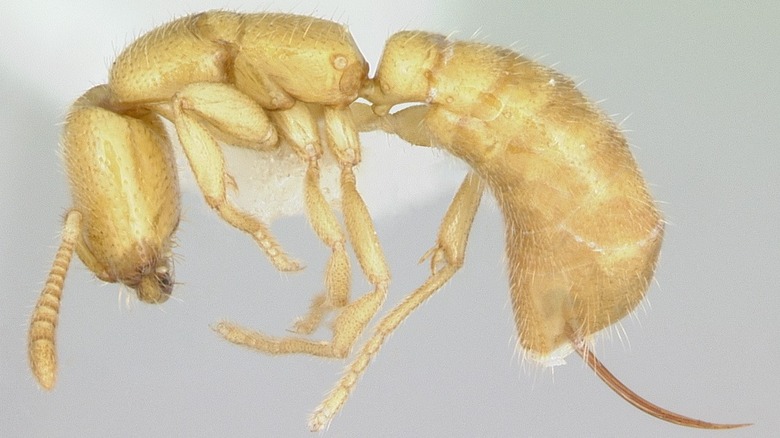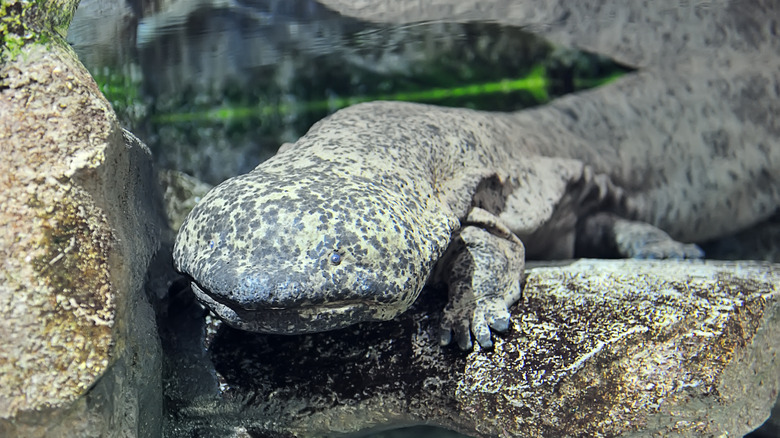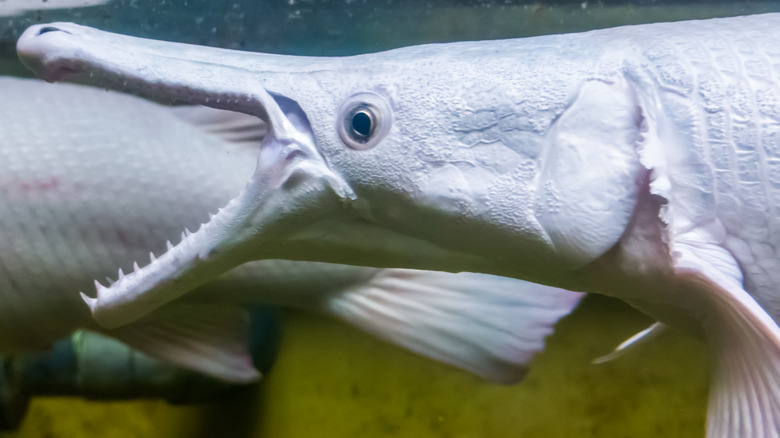Strange Animals You Had No Idea Existed
Animals, it could be argued, make the world complete. It's impossible to imagine a world without the chirps and squawks of birds, without our dogs and cats at our feet and on our laps, and without horses, who exist mainly to give us all — no matter how old or cynical — a reason to yell "Horse!" while driving past a field.
Even the most determined of city folk are familiar with the basic sorts of animals, but here's the thing: Nature isn't just weird, but it's diverse, resourceful, and vast. It doesn't matter if you can name a different animal each second for that 12-hour road trip (pausing only to shout, "Horse!" as appropriate), there's still a bunch of really weird animals most people might not even think exist outside of the latest Star Wars series.
But they do — so, let's talk about some of the weirdest-looking, strangest-acting, coolest animals that most people have no idea they share this big, wide, wonderful world with... for now.
The frogs that communicate via semaphore
In 1794, a French man named Claude Chappe invented a new way to send communications over a long distance. That, says Britannica, was semaphore, and it turns out that humans aren't the only species that had this idea. In 2006, a team from the BBC was filming deep in the rainforest of Panama, and came across a little golden frog aptly (if unimaginatively) named the Panamanian golden frog. Since their natural habitat was filled with all kinds of noise from rushing streams and rivers, their little voices tended to get lost in the noise. The answer? Semaphore.
The little frogs were seen waving their arms and legs in regular patterns that were translated into things like, "You're cute, wanna be my date?" and "Fight me, bro!" Both males and females have been observing using this semaphore communication, and according to the Maryland Zoo, they don't even have external ears anymore. No need!
There's some bad news here, though: The BBC team was there just in time to see the frogs in their native habitat for what might have been one last time. A fungus swept through the population, leaving scientists scrambling to rescue — and disinfect — some of the frogs to take back to captivity. According to The Guardian, the frog population — already threatened by things like deforestation and pollution — were decimated, and it's believed they're now extinct in the wild.
Wait, is that an olde-timey quill pen on the sea floor?
There's a lot of really weird things living in the world's oceans, and one of the weirdest is the aptly-named sea pen. At a glance, that's exactly what it looks like: an olde-timey quill pen that someone stuck into the sea floor then forgot about.
According to the Monterey Bay Aquarium, this weird thing isn't exactly an animal — it's a bunch of animals, all hanging out together in a super-neat symbiotic relationship. It forms when a series of polyps attach to each other: One becomes the "primary polyp" and forms the stem, while the others attach to create the feathery appearance. That's not all for show, either, and all of those other polyps develop special skills. Some only circulate water, some only filter out plankton to feed the entire little colony, and there are some that the only thing they do is reproduce and make new polyps. The whole colony works together to ensure the survival of the community, and there's something here that people can absolutely learn from.
The Wildlife Trusts adds that there are different species of sea pens, with different ways of discouraging marine life that might like to graze on them. Some are phosphorescent, some are narcotic, and some can hide in the "bulb" that secures them to the sea floor (via LiveScience).
The elusive pink armadillo that uses a pseudo-shell to regulate body temp
"Pink," "fairy," and "furry" might not be words usually associated with the armadillo, but it turns out that the Pink Fairy Armadillo is, in fact, a real thing, and not just a creature created by a kindergartener with a preference for pink crayons.
According to the Smithsonian, these cute little guys are the smallest of the armadillos (at about 5 inches long), and they're pretty shy, too — so shy that scientists don't know much about them. There's a good reason for that shyness, though: they're easily upset, and don't seem to be able to survive outside of their native habitat — that's underneath the deserts of central Argentina. Conservationists have said (via Wired) that none have ever been found in the wild, and the only ones that have been studied were either confiscated or rehabilitated after injuries.
What we do know is pretty cool. They have a shell that looks similar to that of the standard armadillo, except for the pink color — and that's important. Their shell is much thinner, it's pink because what you're actually seeing is blood being circulated through the shell to help these little fellas regulate their body temperature. Those massive claws are necessary to help it burrow, and that tiny-looking tail is super important, too. It's used as a fifth limb to help move dirt around underground, along with what scientists describe as their "butt plate."
An Ice Age leftover
Imagine an antelope. Graceful, delicate, pretty... right? Now, put an elephant's trunk on it, but only about the first quarter. Now, you've got the Saiga antelope. National Geographic says that seeing one of these in person requires a trip to Kazakhstan, Mongolia, or Russia, and it's a sight that's rapidly disappearing. Saiga horns are prized for their reputed medicinal qualities in China, and in addition to being widely poached for their horns, a mass die-off in 2015 that claimed the lives of around 200,000 animals has put serious pressure on the species as a whole.
And they've already survived a lot. Scientists say these weird-faced creatures are little changed from when they swarmed across the steppe in huge numbers during the last Ice Age, and that's also when they became so ridiculously fast. Adults can easily hit speeds up to 50 mph, a defense mechanism that was necessary for their survival against the massive, predatory, Ice Age cats.
Unfortunately, it's their Ice Age ancestry that might be part of the problem. They're incredibly susceptible to a particular kind of bacteria that spreads in the heat, and as the earth — particularly their native habitat — gets hotter, it's entirely possible they're going to continue to die en masse.
The octopus that can reproduce at will
The Guardian notes that there's a ton of stories about octopuses who have been taught tricks for treats in much the same way dogs or human toddlers can be taught, and that's created all kinds of debate on just how intelligent the members of the cephalopod family are. The title of "smartest" is still up for grabs, but National Geographic says that the title of "cutest" goes to the Dumbo octopus.
So-named for a set of ear-like fins, the set of around 15 different species of little Dumbo octopuses tend to have stumpy little arms, have an average size comparable to a pet guinea pig, and live as far down as 13,000 feet — which Oceana says makes them the octopus species that are the deepest divers.
Since they live at such deep depths, they don't really have any serious predators. They don't have the ink sac that other octopus species sport as a deterrent, and they don't have a particular breeding season, either. Instead, the male Dumbo octopus hands over what the Ocean Conservancy describes as "a handy-dandy sperm packet," which the female carries with her until she's ready to lay her eggs. Those eggs will hatch fully-formed little Pokémon — er, octopuses — that are ready and waiting to start living their little deep-sea lives.
The undertaker bird
Somehow, all the ugly in the bird world got wrapped up in one that Wild Eye calls the Undertaker Bird. They also give the Marabou stork a nod for a "walking dead" sort of vibe, and that's completely legit. From heads that look like they've got way past their expiration date to their tendency to poop on themselves to keep cool, it's an understatement to say that these are not pleasant-looking birds.
While they might not be winning any beauty pageants, they're still a crucial part of the African ecosystem. Namibia Outdoor says they're pretty much nature's garbage disposals, and are often found eating fish, reptiles, and amphibians from ponds and lakes that have dried up or disappeared during the dry season, cleaning up carcasses, and some even become permanent residents at human garbage dumps. They eat an almost shocking amount, and have been seen tearing off and swallowing pieces of carcasses weighing up to 2 pounds.
In spite of their icky appearance, they're credited with helping to keep a handle on decaying material and, in turn, preventing the spread of bacteria and illness. They might not be doing it for much longer, though: it's estimated that there's only about 900 birds left. Numbers are declining, in part, because they either eat poisoned bait left out for predators like jackals, or eat the poisoned carcasses.
The prismatic horse
Pictures of a super-shiny, metallic-looking horse make the rounds on social media every so often, and it's easy to scoff about how the kids feel it's necessary to Photoshop everything these days, can't they just appreciate things for their natural beauty? Those pictures we're talking about are absolutely real, and those gorgeous horses with the metallic coats are a breed called the Akhal-Teke.
According to The Livestock Conservancy, the Akhal-Teke comes in a variety of colors, but it's the gold that's not only most common, but shows off that metallic shine the best. It's not a trick of the camera: the Akhal-Teke has a unique hair structure that acts as a prism, bending and refracting the light as it hits. The result is a super shiny coat, no matter what the color.
Even not taking their dramatic shine into consideration, they're pretty unique horses. They're one of the oldest breeds in the world, and are immediate descendants of the Scythian horses that were around some 3,000 years ago. They're extraordinarily intelligent, and in spite of their lithe, delicate appearance, they're hardy enough to travel hundreds of miles across harsh terrain with little food or water. They may look like ethereal fairy horses, but they're pretty tough!
The fish with a protective, transparent dome
Take a look at that picture, because we need to talk about exactly what's going on with that fish. It's called the barreleye — or Macropinna microstoma — and here's what you're actually looking at. According to the Monterey Bay Aquarium Research Institute, the small slit that looks like a mouth is, indeed, a mouth. So far, so good. However, the two little features above the mouth aren't eyes, they're "nares," which are described as "olfactory organs." All right, but what about the eyes?
Check out the fish's transparent head. See the two green, domed-shaped structures inside? Those are the eyes. For a long time, there was little known about these deep-sea fish, and scientists were pretty sure those two eyes were fixed in place — probably to allow the fish to look for predators swimming above it. More recent footage shows the eyes swiveling to look at what it's eating.
That transparent dome of a head is almost surprisingly delicate — so delicate that it's usually destroyed when these fish are occasionally hauled to the surface. It's also why we've known so little about them and the adaptations that allow them to live in depths just beyond where light penetrates. Will further research find that there's a little creature sitting in that dome, working the controls? Totally not ruling it out, because the sea is, after all, a weird place.
The misnamed animal that communicates via ultrasound calls
Someone really should have a chat with whoever named the Sunda Flying Lemur, because not only is it not a lemur, but it can't even fly. Don't worry, that's definitely not the weirdest thing about it.
This cute little not-lemur is native to the forests of Southeast Asia, and while it can't fly, it can glide for such long distances — without losing altitude, and even while carrying their young — that it's easy to see how someone could make a mistake. Technically, this little animal is something called a colugo, which is a species that Australian Geographic says is characterized by their gliding ability and teeth that are equal parts tooth and comb, used for keeping parasites out of their fur.
They're also proof that nature never runs out of surprises. In 2017, scientists hanging out in the Sunda Flying Lemur's home turf thought they were recording ultrasonic bat calls, when they realized the noises they were picking up weren't from the bats at all. They had made the first recordings of the complete adorable little gliders' ultrasound chatter, and according to MongaBay, it's not clear what they were talking about, but researchers suspect that the nearby group of seven flying lemurs were using the calls to talk about the human intruders. It kind of makes you wonder who else is talking about us behind our backs, doesn't it?
The beetles that harvest water from the desert air
Medical News Today says that when it comes to humans, we can only live for about three days without water. That makes life in the driest of deserts pretty tricky, indeed, but for the fog-basking beetle, it's no problem at all.
That's because it has a strange way of drinking. In the beetle's native Namib Desert, rain might be rare, but fog is regular enough that these little beetles can rely on it for life-giving moisture. On foggy mornings, the beetles head up to the highest dunes. That's where they wait, says Atlas Obscura, and where they also hoist their rear ends into the air to catch the fog, which condenses on their bodies.
Their unique lifestyle hasn't gone unnoticed, and according to Science, researchers have been studying the unique patterns and shapes of the beetles' bodies to try to decode just how they collect water out of fog, and then transport it. Technology derived from the beetles has already been used in things like water bottles, and the hope is that it'll be able to be adapted into other water-gathering devices.
The bird that's just pretty awful at being a bird
Audubon calls the Hoatzin a "genetic mystery," and that pretty much sums it up. Sure, this Amazonian rainforest-dwelling creature is technically a bird, but it's just really bad at being a bird. It starts right from birth, because when Hoatzin chicks hatch, they come out equipped with some distinctly dinosaur-like claws. They're not just useless, leftover appendages, either: When predators invade the Hoatzin nests, the chicks can take a nose-dive over the side and into the rivers below. Not only can they then swim to shore, but they then quite literally claw their way back up their tree.
They're the only birds that eat nothing but leaves, so it follows that they have a unique digestive system... which is responsible for the birds' relentless methane burps. According to Discover Wildlife, the Hoatzin smells a bit like cow poop, and that's kind of fitting: Their digestive tracts are similar to cows, and they have a process that very much like chewing cud. AquaExpeditions adds that so much of their internal structure is dedicated to digestion that it came at the cost of their ability to fly, which they can technically do... just not well. Oh, and that smell? It's why they're called the Stinkbird.
Their appearance has been compared to the 150-million-year-old Archaeopteryx, and it's thought that they branched off the evolutionary tree around 65 million years ago. No one else joined them.
The antelope that stands on two legs to eat
Some animals look like they were made for hugging, and the gerenuk definitely qualifies. With their giant ears, big eyes, and little tiny faces, the only thing cuter than grown-up gerenuks are the little ones. It's not clear how many baby gerenuks could fit in a standard-size pocket, but it's a line of scientific inquiry that should be followed. (Not really: Leave wildlife in the wild, kids!)
See them just walking through their native African habitat, and they look like very, very slender antelope. It's when they start to eat that the weirdness happens, because according to the African Wildlife Foundation, they don't eat grass or drink water. Instead, they stand on their rear legs and use their front hooves like hands, reaching up to grab high branches and pull them down within reach of their long necks. That allows them to "graze" on tree branches growing as high as eight feet, vastly increasing their access to food.
Still, that's only helped them survive in their natural habitat, and didn't really take into account the hunters that see them as delicious instead of adorable. According to the University of Michigan, they're listed as Near Threatened on the IUCN Red List.
The fish with antifreeze instead of blood
Red blood cells might be one of the building blocks of life, but there's one Antarctic fish that clearly believes red blood cells are for amateurs. The New York Times explains that around 30 million years ago, the water around the South Pole got much colder than it had been for a long time. As a result, evolution kicked in and gave the Antarctic blackfin icefish some biological adjustments that made it possible for them to survive in water that's so close to freezing it might as well be a 7-Eleven Slurpee.
That includes clear blood which, instead of carrying oxygen, essentially works to circulate their version of antifreeze throughout their body. And it works in a strange way: Basically, the so-called "natural antifreeze proteins" work a little backwards from what you'd think, attaching to ice crystals inside the fish and halting the melt process.
They also have ultra-flexible bones, extra-large gills, an oversized heart, and no scales, which allows the fish to absorb oxygen from an oxygen-rich environment right through the skin. While it sounds like nothing could possibly be farther from human anatomy than these guys, that might not be the case: Researchers — including a group from Northeastern University — have been studying these fish in hopes of learning about human conditions like osteoporosis and anemia. They're conditions Antarctic icefish live quite comfortably with, and wouldn't it be neat if we found some medical breakthroughs in the waters of the South Pole?
There's a vampire what-now?
There are plenty of animals you'd expect to see some decent-sized fangs on, but they mostly come in the cat and dog style of animal. How about fanged deer?
These aren't just long teeth, either. According to One Earth, these fangs are so distinctive that they've earned the Chinese water deer the nickname of the Vampire Deer — and while they don't actually use them to drink blood (that we've seen), they do use them for fighting. Since the Chinese water deer doesn't have the antlers that are more commonly seen on deer, so instead, the tusks serve as their weapons that aren't to be taken lightly: They can use them to fight off predators, and when they fight among themselves — usually over mates or territory — injuries can be severe.
There are a couple other footnotes to this one, and it's worth noting that they're often described as having a face like a teddy bear, mostly because of their rounded ears. They're also small — about the size of a large dog — and they're shockingly good swimmers that can paddle across distances up to seven miles without setting foot on land. Water deer, indeed!
The bird that can mimic any sound
According to University of Technology Sydney Research Fellow Hollis Taylor (via The Conversation), the Australian lyrebird can mimic any sound it hears. They've been recorded mimicking — in particular — other birds, but also other forest sounds. Here's the scoop. Taylor says lyrebirds are incredibly shy, but researchers have been able to record them making a wide array of mimicking calls, but in spite of what the occasional viral internet video might try to get you to believe, they're not out in the forest making laser beam sounds. "But," one might say, "I've seen the video! Go on, explain it then!"
Taylor does: The birds in the video were hand-raised, captive birds that learned sounds from humans around them, so that alone is impressive enough. And there's another bit of weirdness. Lyrebirds — wild and captive — have been recorded making sounds like the background noises of a steampunk city. They're clicking, whirring, and grinding noises that sound like something a clockwork bird would make, but that's just their natural calls.
The lyrebirds' skill has been traced to a uniquely-built syrinx (a bird's version of the voice box) that seems to have something to do with their unique calls. And they are unique: Lyrebird parents pass their songs on to their children, and those children sing the same unique, familial songs that scientists have heard passed down through decades (via ABC).
The immortal jellyfish
Even The Lion King sang about it: It's the circle of life, and let's be honest, pointing that out to someone who has just lost a beloved pet is one of the best ways to get punched in the teeth. Still, even if the birth and death cycle is the standard way things work, not every species falls in line.
There's just a single species of jellyfish called Turritopsis dohrnii that the American Museum of Natural History describes as having a "reset button." Let's start with the life of a jellyfish. They go from an egg to a larval stage, and then, they mature into polyps that congregate together on the seafloor. As they grow into jellyfish, they leave their watery nests and become the free-swimming jellies we all know and are grossed out by.
The adults of this species don't die, though. When they're faced with any circumstance that should normally lead to death, they change back into a polyp. The cycle starts again with polyp growth, and when new jellyfish swim away, they're identical to the original on a genetic level. The process has been given the name transdifferentiation, and there's a few noteworthy things about it. While researchers are studying this process in hopes of discovering a way to help repair human cells that have been damaged in some way, it also means there are a ton of hitchhiking jellyfish out there that are spreading nearly unchecked.
There's a good reason they're called 'Dracula' ants
Here's a fun fact: In 2017, LiveScience says researchers found the first concrete evidence that yes, vampire bats do prey on humans and suck their blood. Sleep tight! The idea of something feeding on human blood is the stuff of horror movies for a reason, but hey, at least people don't have it as rough as the ants nicknamed Dracula ants. They're actually a group of species from Madagascar, and Scientific American says that they get their Bram Stoker-inspired moniker because they have a system of feeding that's called "non-destructive parental cannibalism." And yes, that's exactly what it sounds like.
Essentially, worker ants feed on the blood and fluids of the young — not killing them, but just eating enough to keep everyone else going — and then some regurgitate that life-giving liquid to feed the queen, who stays put and relies on the workers around her to feed her.
That leaves the ants covered with puncture wounds and scars, and there's one more bit of information that makes this extra terrifying: These are the same ants that have super-fast jaws that can snap shut in half a millisecond. Those jaws are mainly a defensive measure, it seems, but still... would you want the adults at your daycare feeding on you?
The biggest amphibian in the world breathes through its skin
Most salamanders are little and pretty darn cute. The Chinese giant salamander is neither of those things, but it is cool.
It was only in 2019 that National Geographic says it was identified as the world's largest amphibian, and the difficulty here comes in that the animal called the Chinese giant salamander has been found to consist of at least three different species. Still, these huge creatures are capable of growing to lengths of between 5 and 6 feet, and they can weigh around and upwards of 100 pounds.
They've been around for a long time: The San Diego Zoo says these monsters split from other amphibians around 170 million years ago, and they've remained largely unchanged since the Jurassic Period. It lives mostly underwater in mountain streams across China — surviving by breathing not through gills, but through its skin — and mankind has managed to nearly kill these ancient dinosaurs. Scientists are fairly certain they're nearly extinct in the wild, thanks to a combination of pollution, habitat loss, and a poaching market fueled by the exotic medicine market.
Half fish, half alligator?
The alligator gar isn't actually an alligator, and instead, it's a fish that just happens to look suspiciously like there may have been at least one alligator way back in the family tree somewhere. According to National Geographic, there's at least seven species of alligator gar, and they're the largest of North America's freshwater fish. "Large" is an understatement — they can reach a length of 10 feet, and weigh somewhere around 350 pounds.
They're native to the Mississippi Valley and today, they exist only in a small pocket of the lower Mississippi. Only, sometimes, they don't.
In 2020, the BBC reported that a massive fish identified as an alligator gar had been pulled from a Welsh canal by a local fisherman, and that's not even the farthest away from home they've been found. In 2021, the Independent reported residents of a Singapore town were shocked to find a "prehistoric" creature lying on the shores of a reservoir. It took a while to ID it as an alligator gar — 10,000 miles from home. The explanation for them was once again people: alligator gar are occasionally sold as pets when they're tiny and kinda cute, but once they get to be hundreds of pounds, they're often dumped, or released to spread some sea monster sightings. Bottom line? Don't be that guy.
